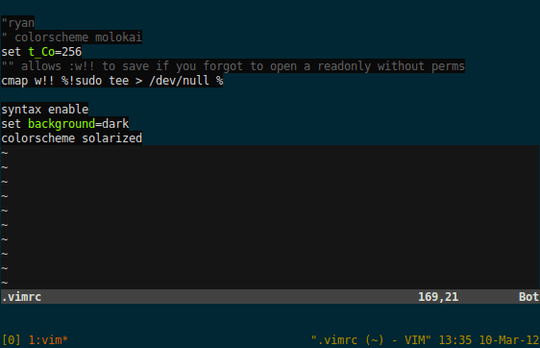99
55
while using vim within tmux I can see that 256 color support is enabled. with $tput colors
However changing the colorscheme in vim while in tmux will change the colorscheme on a per line basis but not the entire background. see screenshot 
Here is a snippet of the my .vimrc file for example. My original colorscheme is solarized dark and then after running :colorscheme molokai you see what happens.
info
- gnome-terminal
- bash
in my ~/.tmux.conf
set -g default-terminal "screen-256color"
in my ~/.vimrc
set t_Co=256
in my ~/.bashrc
# ryan
export TERM="xterm-256color"
# ryan
alias tmux="tmux -2"
in my ~/.profile
# ryan 256 color support
if [ -e /usr/share/terminfo/x/xterm-256color ]; then
export TERM='xterm-256color'
else
export TERM='xterm-color'
fi
Any ideas how I can get a full colorscheme change in vim? Are all my snippets from the files looking good?
What happens if you press control-l in normal mode, or execute the ":redraw" command? – Heptite – 2012-03-10T22:10:44.420
@Heptite nothing happens still the color change is per line like in the screenshot – winchendonsprings – 2012-03-10T22:19:18.093